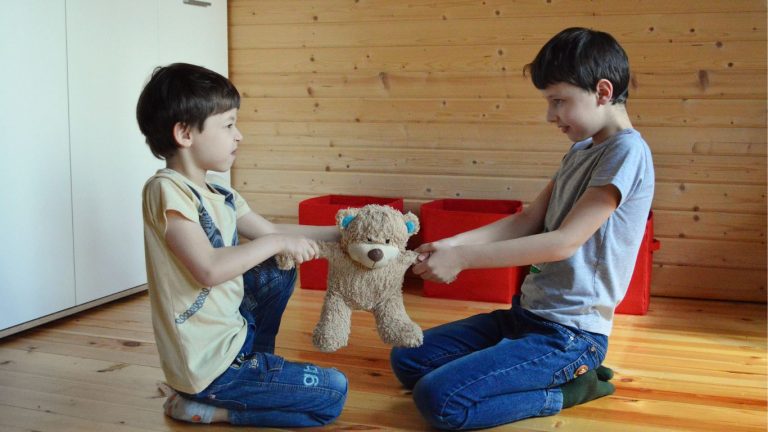Not eating lunch at school is a common problem for a lot of children. It can be quite emotional for parents too, especially when you see good food being wasted, and wonder if your child is getting enough daily nutrition. Here’s some simple and practical ideas to help increase the chance lunch gets eaten, and prevent full lunchboxes from becoming boomerangs.
The lunchbox is worthy of Nadia Lim. It’s got all the favourites plus some options guaranteed to be ignored but that make us feel better.
Dashing to the school gates in the afternoon we spot our child and breathlessly ask what they’ve eaten. Deer in the headlight eyes stare back, then the head drops, the shoulders sag and we realise without looking that we have a boomerang box. Again.
Not eating lunch is a common problem and not just for children who are picky or have issues eating. Many children are too busy playing, socialising or just lose track of the eating window and suddenly lunchtime is over, and the box returns to the bag largely neglected.
There are some things to consider that can improve eating for children at all stages of the eating competency spectrum. Some are simple and obvious and yet can still impact either negatively or positively on how our children eat.
10 Tips for Preventing the Lunchbox Boomerang
1. Away from home the more familiar foods are the more likely to get eaten. The lunchbox is not the place for learning. For anxious eaters, road testing anything new at home prior to sending to school supports a smoother experience.
2. Having the food in easy to open and familiar containers scaffolds eating. Not being able to confidently open packaging solo may mean it gets returned to the box. Adding something small like a favourite sticker on a pot can make the difference between acceptance and rejection.
3. Ticking boxes for our child in terms of temperature, taste and texture. Hot or cold can be a make or break as can foods that are too squishy or not crunchy or are a new flavour. Working with our child and providing food that is within their specific parameters, as best as practicable, supports better results.
4. Smaller items are often less intimidating and easier to contemplate than larger offerings. Even sandwiches cut into little pieces are more manageable and help with “grab and go”.
5. Without morphing into Nadia Lim every day, presentation is important. We eat with our eyes so having something that looks good is supportive of better eating.
6. Offer choices. Empowering our child, within strict parameters, enables them to feel that they have some control over their food.
As a parent the mission is to reduce the fear and increase the comfort and confidence around eating.
If your child is very sensitive this can be challenging in a school environment. Noise, smells, peer pressure (in a negative not positive way) and fear of not being able to competently manage eating can make lunchtimes a miserable experience if not managed well.
Part of ensuring your child is supported as much as possible is open lines of communication, so our teachers know how they can help. Often small changes can reap large rewards.
The smell of other people’s lunch for example, may be distressing. Being able to sit a little separately, at least initially may not be difficult for the teacher to manage but awareness of the issue enables everyone to act in our child’s best interests.
7. The more relaxed we are the more likely we are to eat. This goes for adults as well as children. If we are arguing, anxious, upset, distracted or pressured, we are not focused on eating. Anything that impacts on the comfort level will impede eating and away from home small worries are often magnified and this makes eating less easy again. What can we do that supports our child in this regard?
8. Having a limited amount of time to eat puts pressure on us to ‘perform’. The lunchbox must be conquered quickly. For those who are naturally less comfortable about eating this can dampen appetite. Rules that are placed around what must be eaten first or the quantity to be consumed magnifies this. Suddenly the innocuous sandwich seems to have grown and eating it seems insurmountable. Allowing your child more control over eating can dramatically increase the quantity eaten.
9. Rotating items within the lunchbox is our responsibility. As much as it’s comforting for your child to see the same thing every day it also encourages food jags. If they then lose interest in a particular option, we may find it challenging to substitute something new. Gentle changes are important.
10. Taking an inventory of the lunchbox contents the minute you see your child can set up a success/failure equation. Your child is judged on whether lunch has been conquered or not. Knowing their eating is being analysed can impact on the ability to eat competently. This extends to conversations with your child’s caregiver about food and volume too.
All ten points revolve around comfort.
The more relaxed our child is in their environment, in the contents of the lunchbox, in the messages that are being imparted, the more likely they are to eat enthusiastically and well.
Eating away from home can be fraught with obstacles, but as a parent we can do some very specific things that scaffold our child and enable them to eat more comfortably.
Ending the boomerang lunchbox is achievable but may involve us having a greater understanding of just what those obstacles are.
For more expert advice on fussy eating and other childhood issues, check out our School age: Food and nutrition section.





